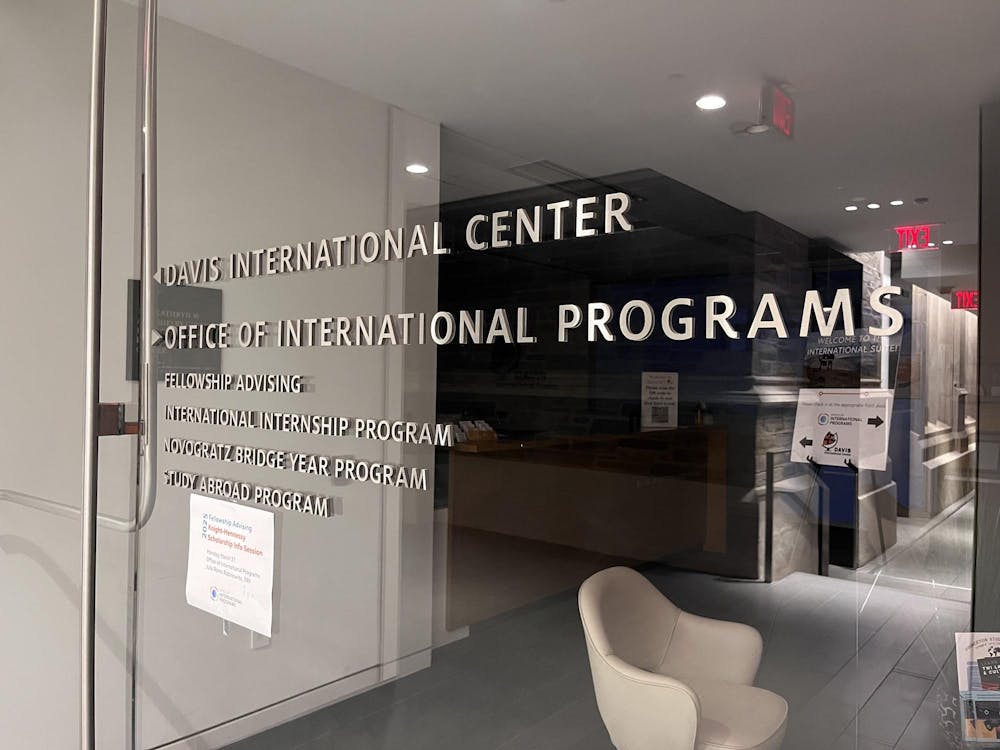The Law School Admission Council (LSAC) recently altered the content and increased the security measures of the Law School Admission Test (LSAT) following extensive research, according to its website.
Students and The Princeton Review said the changes will hardly modify scores or the test-taking experience, however.
"I can't imagine that the changes will substantially affect most students' scores," Princeton Pre-Law Society president Aaron Spolin '08 said.
The writing and reading comprehension sections were adjusted. The test's writing section will feature only decision prompts, which marks a return to the test design before 2005. The writing sample will remain an unscored section, and a scanned copy of the essay will be sent to each law school to which test-takers apply.
"Because the writing sample isn't scored, going back to the original kind of prompt is no big deal," Tricia McCloskey, the Executive Director of the Princeton Review Graduate Program Development, said.
In 2005 and 2006, each test-taker was randomly given either a decision or an argument prompt. Decision prompts present two options and ask test-takers to choose one based on their criteria. An argument prompt presents an argument and asks test takers to evaluate its reasoning.
Also new in June, the reading comprehension section will feature a comparative reading example. Unlike previous LSAT reading comprehension questions, the comparative reading example will feature two shorter passages rather than one longer one. Test-takers will be asked questions about both passages and how they relate to each other.
"The comparative reading section won't really make a big difference," McCloskey said. "It's a little bit of a change, but you're still going to be able to apply all the same basic strategies of reading comprehension to those questions."

The comparative reading questions will be one of four reading comprehension sections on the exam. The other three will have only one passage of writing each.
The LSAC also decided to enforce much stricter security regulations to promote more uniform test-taking procedures and discourage cheating, McCloskey said.
"There's some belief that different proctors interpret the instructions differently," McCloskey said. "The new regulations will help ensure that all test-takers have the same security regulations while they take the test. I've never seen any cheating; it would be a hard test to cheat on."
Test-takers will not be allowed to bring any purses or backpacks into the testing room; instead, they will be permitted to carry only a clear Ziploc plastic bag containing the following items: LSAT admission ticket, ID, wallet, keys, hygiene products, pencils and pencil sharpener (no mechanical pencils), highlighter, erasers, tissues and a snack for the break.

Only tissues, ID, pencils, erasers and non-digital wristwatches will be allowed on the desktop during testing. Furthermore, test-takers will be forbidden from wearing hats or hoods, except for religious apparel.
"The Ziploc bag part seems a little odd and honestly over the top," McCloskey said. "Digital timers could be annoying or disruptive if people forgot to turn off their watches," she added. "Also, some companies have developed timers with a lot of new features which might give test-takers an unfair advantage."
Spolin, who took the LSAT in September, said the ban on digital clocks should improve the test-taking experience.
"When I took the LSAT, some kid's [kitchen timer] started beeping, and it took a while for the student and a nearby proctor to figure out how to turn it off," Spolin said.
McCloskey said that when she last took the exam in February, the security seemed much stricter than it had in past years. "In the past, people were allowed to leave early, or have drinks of water on the desk, or keep their bags next to them," she said, citing her experiences taking the LSAT once a year for the past four years. "But in February the proctors were much stricter about that."
Spolin agreed based on the test he took in the fall.
"The proctors took the day very seriously," he said. "There were two proctors at the back of the room watching everyone, another at the front and yet another walking up and down the aisles. I felt lucky to be occupied with an interesting task. I don't know how they had the mental discipline to stare at us and pace around the room for nearly four hours straight."
The new regulations make the LSAT the paper test with the strictest security, McCloskey said. The other standardized tests for graduate schools, such as the MCAT, GRE and GMAT, are administered on computers. Test-takers are required to store all belongings in a locker and take a digital fingerprint or photo for identification.
The LSAT is the only professional test that is still taken on paper. McCloskey said: "It seems a little like some of the measures at the computer-based testing centers are starting to trickle down into the paper-based testing."







